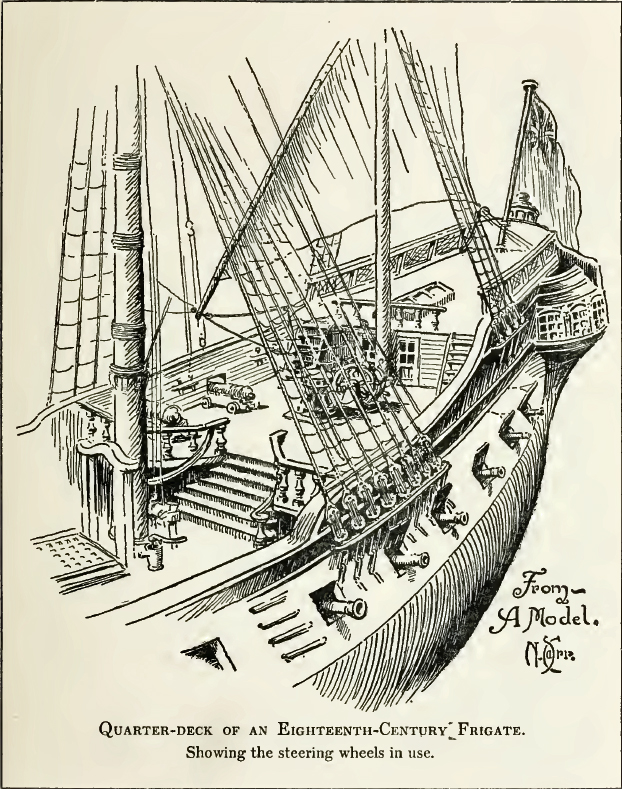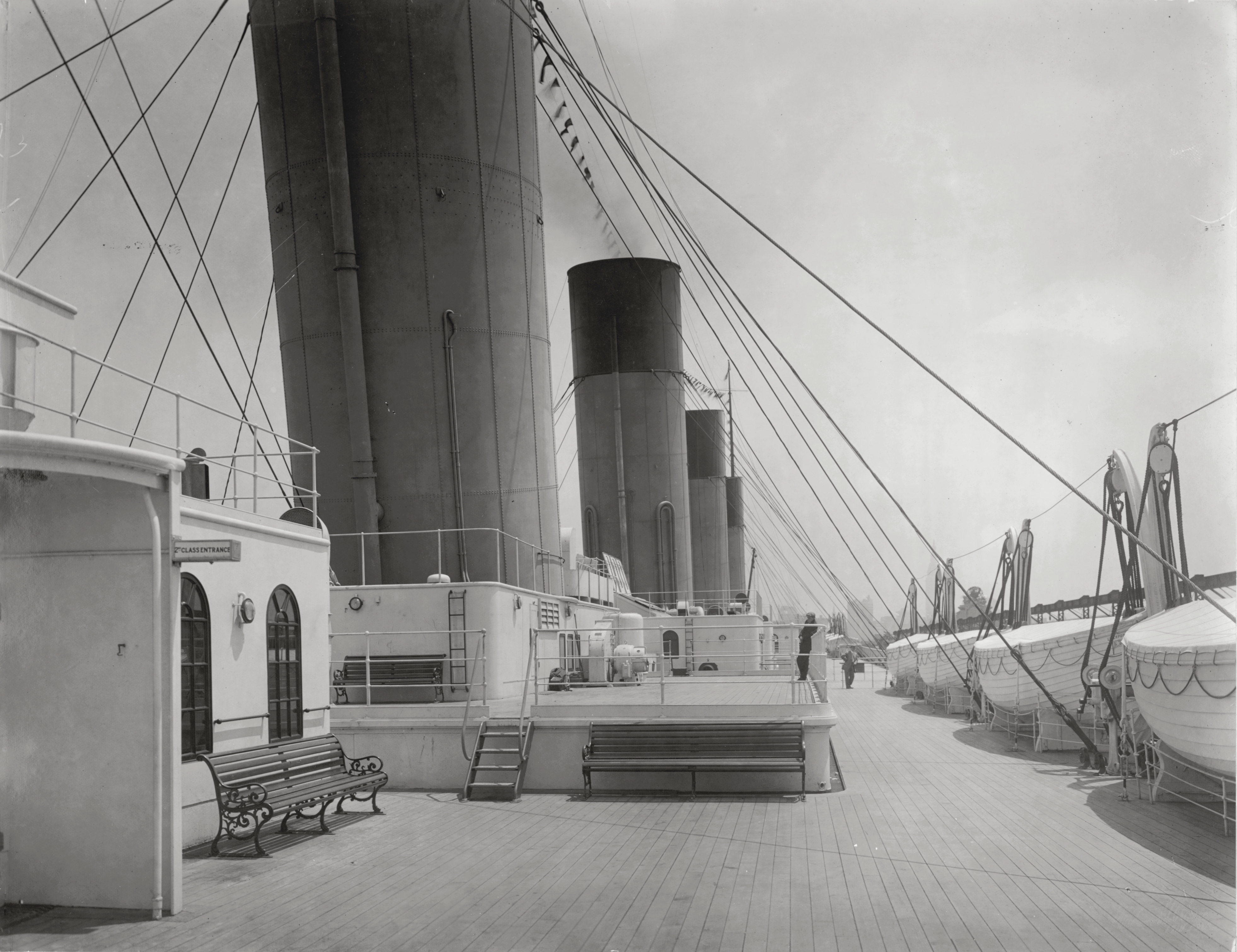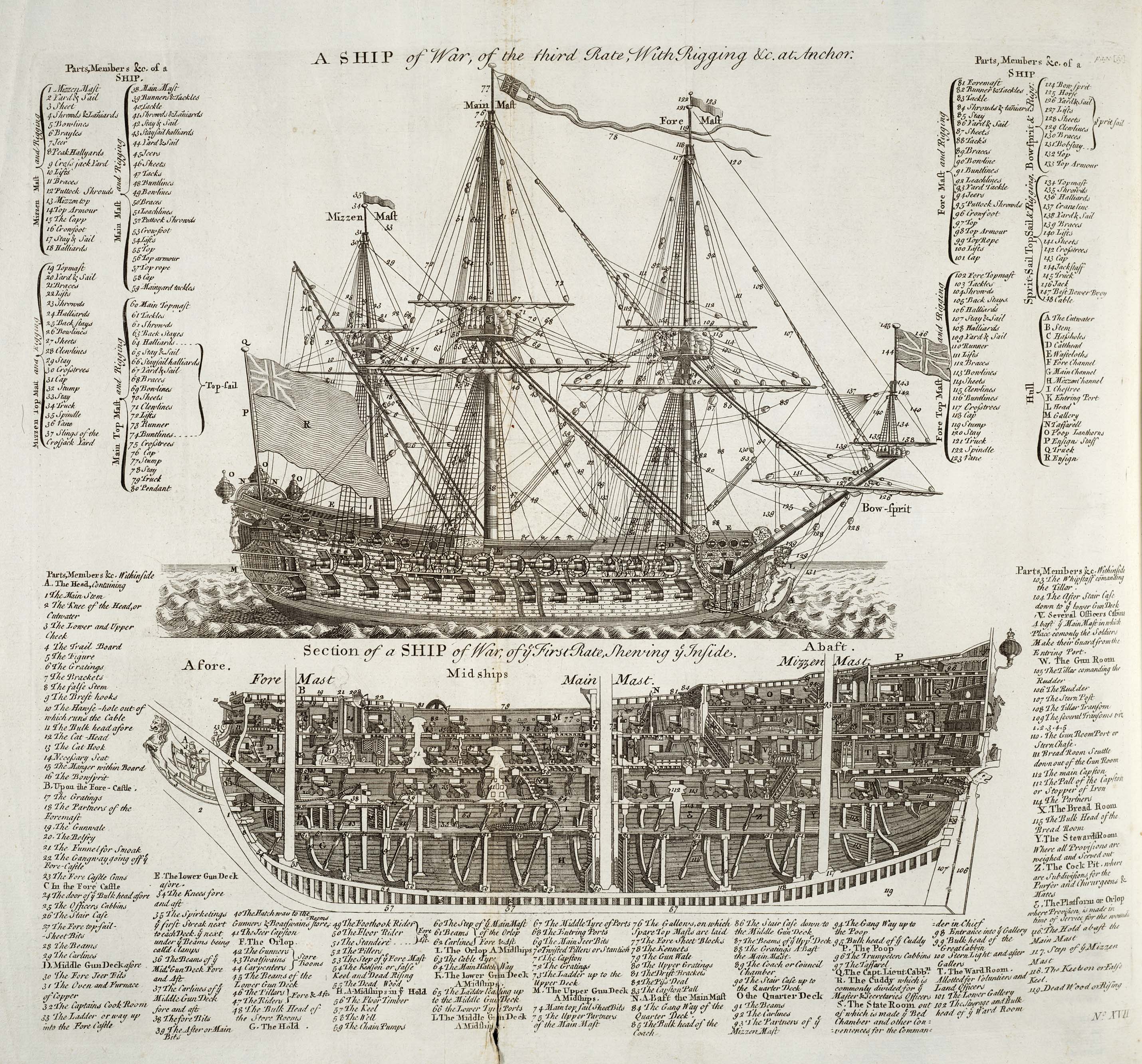|
Gun Deck
The term gun deck used to refer to a deck aboard a ship that was primarily used for the mounting of cannon A cannon is a large-caliber gun classified as a type of artillery, which usually launches a projectile using explosive chemical propellant. Gunpowder ("black powder") was the primary propellant before the invention of smokeless powder during th ... to be fired in broadsides. The term is generally applied to decks enclosed under a roof; smaller and Rating system of the Royal Navy#Unrated vessels, unrated vessels carried their guns on the Deck (ship)#Upper deck, upper deck, forecastle and quarterdeck, and these were not described as gun decks.Knight, p 798Cutler, p 107 Slang The term "gun decking" is also naval slang for fabricating or falsifying something. A possible explanation relates to midshipmen retiring to the gun deck to complete their celestial navigation assignments of computing the ship's position three times daily following morning Star-Sighting, star sights, ... [...More Info...] [...Related Items...] OR: [Wikipedia] [Google] [Baidu] |
Batterie Inférieure - Victory
Battery or batterie most often refers to: * Electric battery, a device that provides electrical power * Battery (crime), a crime involving unlawful physical contact Battery may also refer to: Energy source * Battery indicator, a device which gauges the state of charge for electronics *Energy storage, including batteries that are not electrochemical *List of battery types Law * Battery (tort), a civil wrong in common law of intentional harmful or offensive contact Military and naval uses * Artillery battery, an organized group of artillery pieces ** Main battery, the primary weapons of a warship ** Secondary battery (artillery), the smaller guns on a warship * Battery, a position of a cartridge in a firearm action Arts and entertainment Music * Battery (electro-industrial band) * Battery (hardcore punk band) * "Battery" (song), a song by Metallica from the 1986 album ''Master of Puppets'' * Drums, which have historically been grouped into ensembles called a battery ** Dr ... [...More Info...] [...Related Items...] OR: [Wikipedia] [Google] [Baidu] |
Quarterdeck
The quarterdeck is a raised deck behind the main mast of a sailing ship. Traditionally it was where the captain commanded his vessel and where the ship's colours were kept. This led to its use as the main ceremonial and reception area on board, and the word is still used to refer to such an area on a ship or even in naval establishments on land. Many such facilities have areas decorated like shipboard quarterdecks. In the 20th century the word came to be applied to the area at the stern of the ship, often (on naval vessels) used for secondary weapons and (on battleships) seaplane catapults. Ceremonial use There are ancient traditions of offering special deference to the quarterdeck. Greek, Roman, and Carthaginian warships all carried shrines which were given special respect. This continued into Christian times, and in medieval British warships, the religious shrine was set up on the quarterdeck. All hands were required to salute it by taking off their hats or caps. This le ... [...More Info...] [...Related Items...] OR: [Wikipedia] [Google] [Baidu] |
Glossary Of Nautical Terms (A-L)
Glossary of nautical terms may refer to: * Glossary of nautical terms (A–L) * Glossary of nautical terms (M–Z) {{Short pages monitor ... [...More Info...] [...Related Items...] OR: [Wikipedia] [Google] [Baidu] |
Dead Reckoning
In navigation, dead reckoning is the process of calculating the current position of a moving object by using a previously determined position, or fix, and incorporating estimates of speed, heading (or direction or course), and elapsed time. The corresponding term in biology, to describe the processes by which animals update their estimates of position or heading, is path integration. Advances in navigational aids that give accurate information on position, in particular satellite navigation using the Global Positioning System, have made simple dead reckoning by humans obsolete for most purposes. However, inertial navigation systems, which provide very accurate directional information, use dead reckoning and are very widely applied. Etymology Contrary to myth, the term "dead reckoning" was not originally used to abbreviate "deduced reckoning", nor is it a misspelling of the term "ded reckoning". The use of "ded" or "deduced reckoning" is not known to have appeared earlier th ... [...More Info...] [...Related Items...] OR: [Wikipedia] [Google] [Baidu] |
Extrapolate
In mathematics, extrapolation is a type of estimation, beyond the original observation range, of the value of a variable on the basis of its relationship with another variable. It is similar to interpolation, which produces estimates between known observations, but extrapolation is subject to greater uncertainty and a higher risk of producing meaningless results. Extrapolation may also mean extension of a method, assuming similar methods will be applicable. Extrapolation may also apply to human experience to project, extend, or expand known experience into an area not known or previously experienced. By doing so, one makes an assumption of the unknownExtrapolation entry at Merriam–Webster (for example, a driver ... [...More Info...] [...Related Items...] OR: [Wikipedia] [Google] [Baidu] |
Celestial Navigation
Celestial navigation, also known as astronavigation, is the practice of position fixing using stars and other celestial bodies that enables a navigator to accurately determine their actual current physical position in space or on the surface of the Earth without relying solely on estimated positional calculations, commonly known as dead reckoning. Celestial navigation is performed without using satellite navigation or other similar modern electronic or digital positioning means. Celestial navigation uses "sights," or timed angular measurements, taken typically between a celestial body (e.g., the Sun, the Moon, a planet, or a star) and the visible horizon. Celestial navigation can also take advantage of measurements between celestial bodies without reference to the Earth's horizon, such as when the Moon and other selected bodies are used in the practice called "lunars" or the Lunar distance (navigation), lunar distance method, used for determining precise time when time is u ... [...More Info...] [...Related Items...] OR: [Wikipedia] [Google] [Baidu] |
Midshipmen
A midshipman is an officer of the lowest rank in the Royal Navy, United States Navy, and many Commonwealth navies. Commonwealth countries which use the rank include Canada (Naval Cadet), Australia, Bangladesh, Namibia, New Zealand, South Africa, India, Pakistan, Singapore, Sri Lanka, and Kenya. In the 17th century, a midshipman was a rating for an experienced seaman, and the word derives from the area aboard a ship, amidships, either where he worked on the ship, or where he was berthed. Beginning in the 18th century, a commissioned officer candidate was rated as a midshipman, and the seaman rating began to slowly die out. By the Napoleonic era (1793–1815), a midshipman was an apprentice officer who had at least nominally served at least three years as a volunteer, officer's servant or able seaman, and was roughly equivalent to a present-day petty officer in rank and responsibilities. After serving at least three years as a midshipman or master's mate, he was eligible to tak ... [...More Info...] [...Related Items...] OR: [Wikipedia] [Google] [Baidu] |
Forecastle
The forecastle ( ; contracted as fo'c'sle or fo'c's'le) is the upper deck (ship), deck of a sailing ship forward of the foremast, or, historically, the forward part of a ship with the sailors' living quarters. Related to the latter meaning is the phrase "Wiktionary:before the mast, before the mast" which denotes anything related to ordinary sailors, as opposed to a ship's officers. History and design In medieval shipbuilding, a ship of war was usually equipped with a tall, multi-deck castle-like structure in the bow (ship), bow of the ship. It served as a platform for archers to shoot down on enemy ships, or as a defensive stronghold if the ship were boarded. A similar but usually much larger structure, called the aftcastle, was at the aft end of the ship, often stretching all the way from the main Mast (sailing), mast to the stern. Having such tall upper works on the ship was detrimental to sailing performance. As cannons were introduced and gunfire replaced boarding as th ... [...More Info...] [...Related Items...] OR: [Wikipedia] [Google] [Baidu] |
Deck (ship)
A deck is a permanent covering over a Compartment (ship), compartment or a hull (watercraft), hull of a ship. On a boat or ship, the primary or upper deck is the horizontal structure that forms the "roof" of the hull, strengthening it and serving as the primary working surface. Vessels often have more than one level both within the hull and in the superstructure above the primary deck, similar to the floors of a multi-storey building, that are also referred to as decks, as are certain compartments and decks built over specific areas of the superstructure. Decks for some purposes have specific names. Structure The main purpose of the upper or primary deck is structural, and only secondarily to provide weather-tightness and support people and equipment. The deck serves as the lid to the complex box girder which can be identified as the hull. It resists Tension (physics), tension, Compression (physics), compression, and racking forces. The deck's scantling is usually the same as t ... [...More Info...] [...Related Items...] OR: [Wikipedia] [Google] [Baidu] |
Rating System Of The Royal Navy
The rating system of the Royal Navy and its predecessors was used by the Royal Navy between the beginning of the 17th century and the middle of the 19th century to categorise sailing warships, initially classing them according to their assigned complement of men, and later according to the number of their carriage-mounted guns. The rating system of the Royal Navy formally came to an end in the late 19th century by declaration of the Admiralty; rating ships by the number of guns had become obsolete with new types of gun, the introduction of steam propulsion and the use of iron and steel armour. Origins and description The first movement towards a English naval rating system began in the early 16th century, when the largest carracks in the Tudor navy, such as ''Mary Rose'', ''Peter Pomegranate'' and '' Henry Grace à Dieu'', were denoted as "great ships". This was due only to their size, not to their weight, crew or number of guns. When these carracks were superseded by ga ... [...More Info...] [...Related Items...] OR: [Wikipedia] [Google] [Baidu] |




